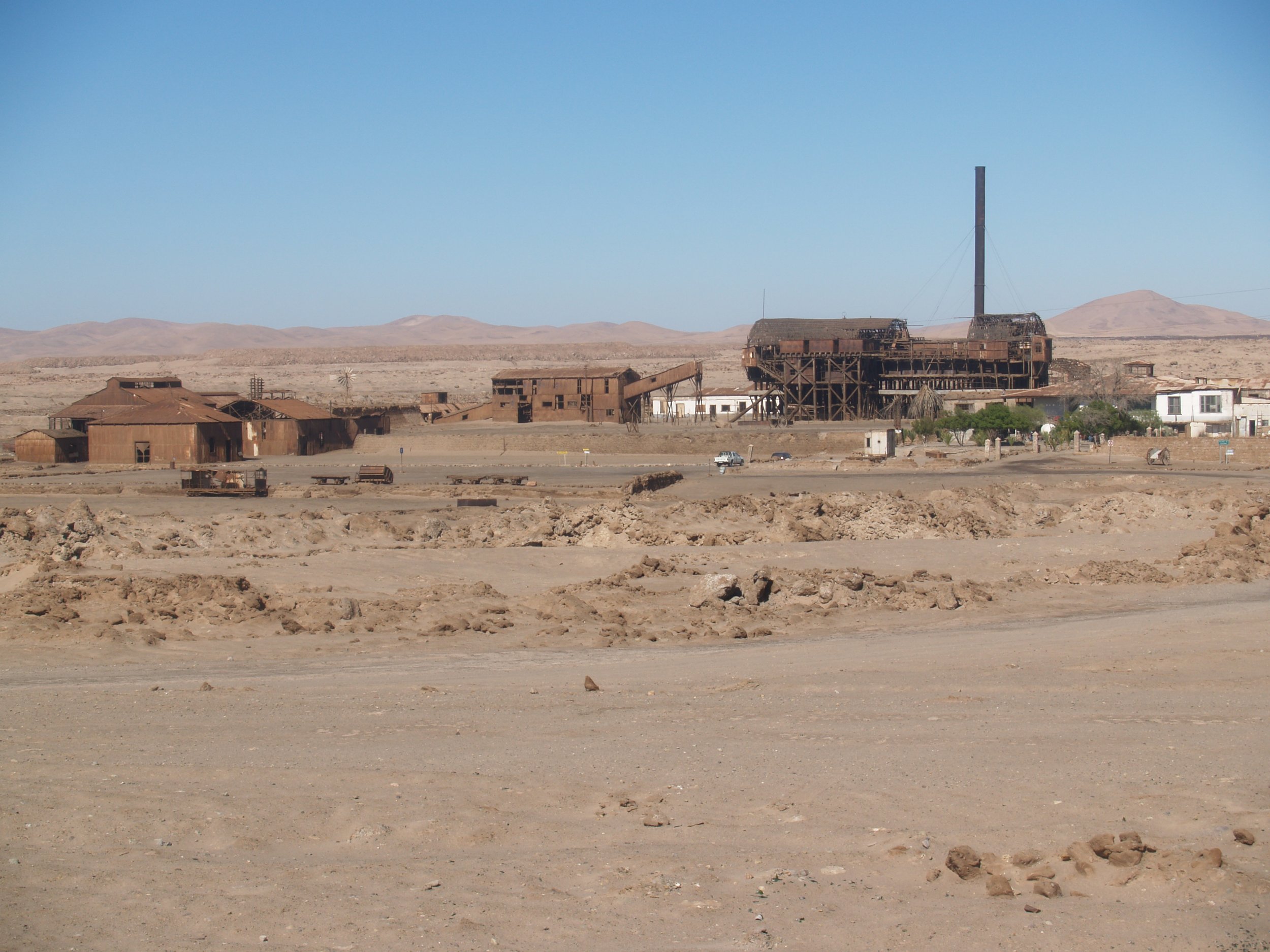Chile. Mining and Minefields in the Atacama
Located on a narrow plateau between Chile’s Pacific coastline and the Andes Mountains, the Atacama Desert stretches 1,600 kilometers from north to south across an areas of more than 105,000 km2. With many of its weather stations having never recorded precipitation, the Atacama is the driest non-polar place on Earth. Contributing to its extreme aridity are cool temperatures of the Humboldt Ocean Current that create atmospheric stability and inhibit rainfall. Some interior parts of the Atacama are completely devoid of vegetation. Elsewhere, biologists have identified more than 500 species of hardy plants that subsist on trace amounts of moisture. There are also beetles, grasshoppers, wasps, and a few reptiles. Remarkable for its unusual climate, the Atacama is also internationally known for minerals that sustain Chile’s economy. Along with gold, iron, and silver reserves, the region contains some of the world’s largest deposits of nitrates, copper, and lithium.
My bus journey northward began in Santiago, Chile’s capital city. Along the coastal highway we passed several abandoned nitrate towns, where salitre (aka Chilean saltpeter) was once processed to produce sodium or potassium nitrate that was exported to Europe for making fertilizers or explosives. More than 170 nitrate towns were constructed within the Atacama during the 19th century. Demand for salitre remained strong until German scientists developed synthetic nitrates in the early 20th century.
After spending the night in the town of San Pedro de Atacama, we drove 55 kilometers south to the Salar de Atacama, a salt-encrusted former lakebed that covers 3,000 km2. Scientists estimate that large meltwater lakes covered parts of the Atacama as recently as 9,000 to 25,000 years ago. Today the salar is a focal point for lithium mining. With cloudless skies, miners have found the area ideal for evaporating lithium-rich brine pumped from below to the dry lakebed’s surface. The yellow lithium powder is then transported to Asia for making batteries used in mobile telephones, cars, and other consumer products. At the present time, Chile is the world’s number two producer of lithium following Australia. Lithium mining in the Atacama is not without controversy since pumping impacts groundwater reserves and can be harmful to wetlands.
About 13 kilometers west of San Pedro de Atacama we stopped to see rock formations and dunes of Valle da la Luna (Moon Valley). Estimated to be 22 million years old, the valley’s barren landscape is accented by distant volcanoes. With a moonlike appearance, the landscape was used by the U.S. National Aeronautics and Space Administration (NASA) to test four-wheeled Mars rovers. The following day we drove 95 kilometers north to the El Tatio Geyser Field. At 4,320 meters, El Tatio is the world’s highest altitude geyser field. It is also the world’s third largest in total size after Yellowstone in the United States and Dolina Geizerov in Russia. The field has more than 500 geothermal features (80 are active). There are no handrails, walkways, or signs warning visitors about dangers posed by hot springs or erupting geysers. Before departing we walked to an abandoned geothermal well that was built to generate electricity.
Northwest of San Pedro de Atacama we stopped at the mining town of Calma for a tour of Chuquicamata, the world’s largest open pit copper mine. Extending to a depth of one kilometer, the mine is three kilometers wide and five kilometers long. As we watched, eight-meter-wide dump trucks made the slow journey up and down the mine’s circular road. Chuquicamata was U.S.-owned until 1970 when Chilean President Salvador Allende nationalized the country’s copper mines. Today, the mine is no longer being extended downward. Instead, horizontal shafts are being cut to extract copper ore that is transported by train to the city of Mejillones before being loaded on ships.
On our southwest drive to Antofagasta, we visited the abandoned nitrate town of Chacaburo. In 1973, Chilean President Augusto Pinochet converted Chacaburo into a concentration camp to hold political prisoners including physicians, professors, and lawyers. It estimated that more than 80,000 leftists, socialists, and critics of the regime were imprisoned during Pinochet’s rule. Tragically, another 3,000 disappeared or were executed. At its height, 1,800 persons were held at Chacaburo. Today, guides interpret the site including how buildings were used. On entering and exiting the prison we were careful to stay on the well-marked path since unexploded landmines still surround the outer fence.






